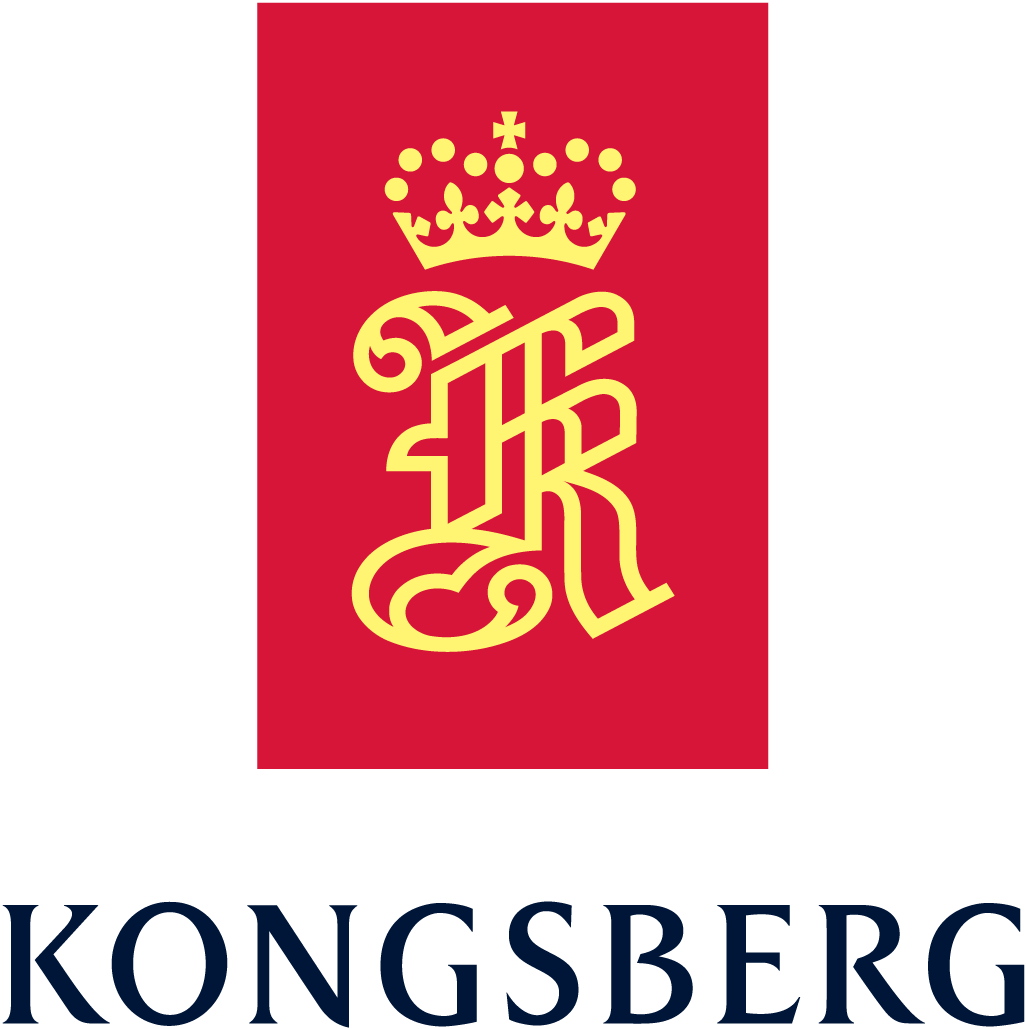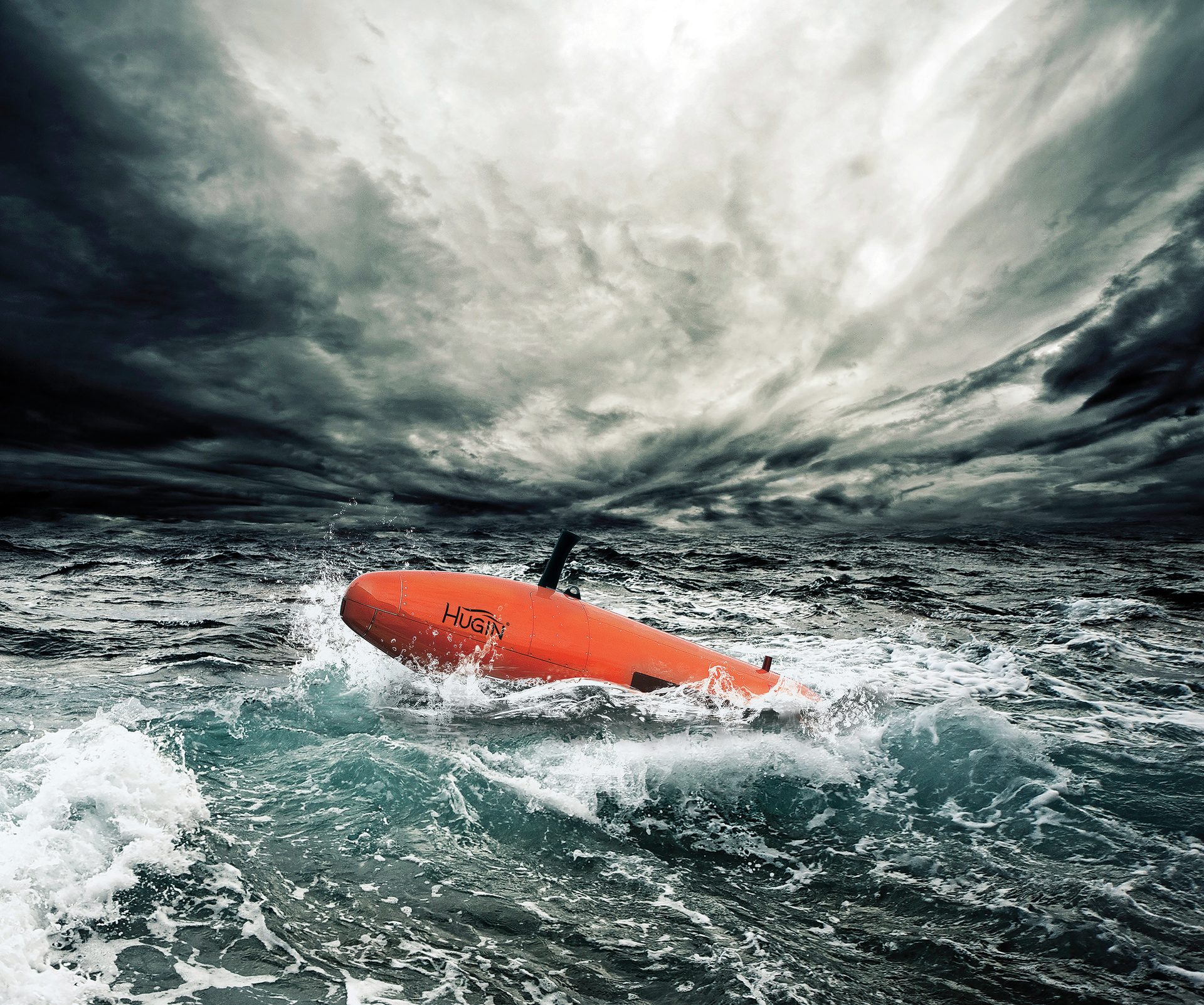
– It allows us to take the pulse of the Earth
Kongsberg technology on the Statsraad Lehmkuhl:
With new technology and state-of-the-art research equipment from Kongsberg Gruppen on board, Statsraad Lehmkuhl has completed the two-year-long circumnavigation named the One Ocean Expedition.
The goal has been to map out life in the ocean to find more sustainable ways of managing its resources in the future.
MILJØ
Journalist: Siri Skaustein | Kongsberg Gruppen
Photo: Malin Kvamme | Ole Martin Algerøy | Shutterstock
We often refer to Earth as the 'blue planet'. The ocean covers more than 70 percent of the Earth's surface, and more than half of the oxygen we breathe comes from it. The ocean serves as a source for food for people all around the world, it governs our weather, and it keeps the Earth's temperature in balance.
But how is the ocean really doing?
"I have noticed a change in the ocean through my years working as captain. When we sail, we see things, like plastic, floating on the ocean surface. No matter where we are, we see something, even if it's in the middle of the Atlantic," says captain of the Statsraad Lehmkuhl, Marcus Seidl. He has spent over 35 years on the ship, 27 of them as captain. He is thrilled the ship has been equipped with state-of-the-art technology from Kongsberg Gruppen.
"The research equipment on board has been very important for the One Ocean Expedition. It has allowed us to monitor the Earth's pulse along the way," he explains.
The One Ocean Expedition is part of the UN's Decade of Ocean Science. The 604-day-long expedition spanned nearly 60,000 nautical miles and 37 ports around the world. The goal of the circumnavigation was to collect data on how we are impacting the ocean, with both scientists and students on board the ship throughout the journey.
Marine biology student at the Universuty of Bergen, Madelen Hegrestad, was one of the participants in the voyage. She joined the Statsraad from Chile to Fiji, and conducted fieldwork on microplastics while on board.
Important expedition
Madelen Hegrestad
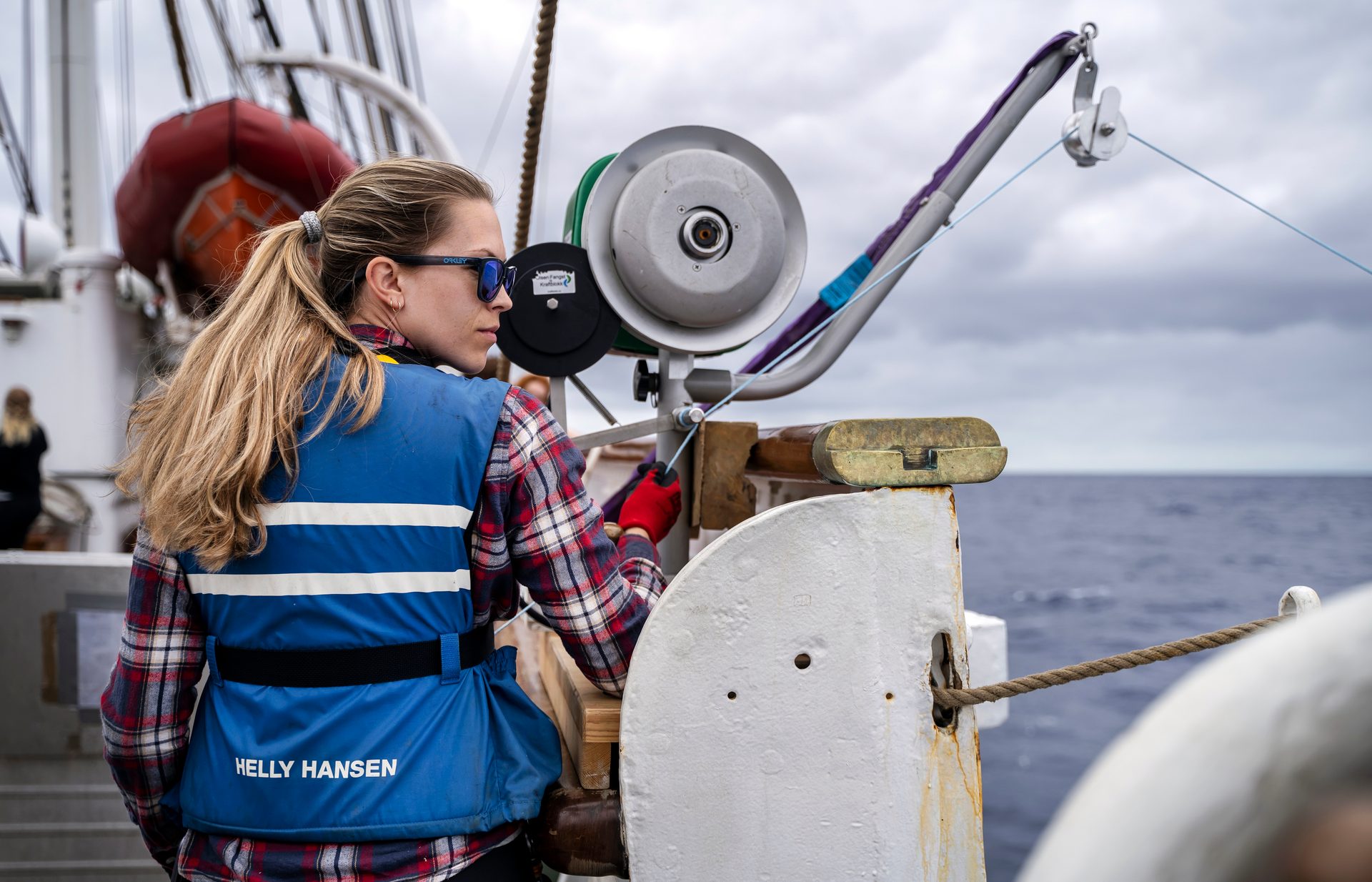
"Marine plastic pollution is considered one of the biggest global environmental problems of our time. A research project that measures microplastics in all the world's oceans - using the same method, is quite unique. No other research ship has sailed this route before," she explains.
Hegrestad believes the One Ocean Expedition can help fill in some gaps in our knowledge of microplastics, and that the research could lead to changes and increased awareness.
"One Ocean has highlighted the need for a more sustainable ocean and its importance. And the combination of being a research ship that sails around the world, while the guests on board have a once-in-a-lifetime experience is brilliant," she says.
Pollution, such as micro- and macro-plastics, chemical contamination and noise pollution are among the oceanic challenges that have increased in recent years, says scientist Geir Pedersen. He works at the Institute of Marine Research and has accessed useful data through the One Ocean Expedition.
"The ocean is important for many reasons. It provides access to food for billions of people, and it's also a critical part of the climate system. One Ocean has gathered a wealth of data and knowledge about environmental conditions and the status of marine organisms around the world's oceans. This knowledge can contribute to managing the ocean in a more sustainable way moving forward," he says.
Human Impact
State-of-the-art technology
Although the Statsraad Lehmkuhl is over a hundred years old, the ship is equipped with state-of-the-art technology. A generator drives the propeller backward while the ship is sailing. This provides the hybrid ship with power, and any excess electricity is stored in a separate battery pack on board.
"The technical equipment on the ship was installed in collaboration with Kongsberg Maritime. Kongsberg Gruppen has both supplied the technology in the battery room, as well as the navigation equipment, which has been completely renewed," the captain explains.
Marine scientist Geir Pedersen is impressed by the technology the old sailing ship has been equipped with for the expedition.
"Kongsberg Gruppen has, among other things, supplied the weather station, which has measured wind, pressure, and temperature along the way. They also provided the scientific sonar, which is particularly important to us and our research group. It gives us information about the distribution of fish and plankton, both vertically and horizontally in the world's oceans," he explains.
"We have benefited greatly from Kongsberg's Blue Insight, which is a system for transmitting all the data stored on board in real-time. This means that I can be in Bergen and have real time access to the data being collected in for instance the Atlantic."
It has been an honour for Kongsberg Maritime to equip one of the world's largest sailing ships with new technology for such an important circumnavigation, says CEO of Kongsberg Maritime, Lisa Edvardsen Haugan.
"We are proud of the long collaboration we have had with the Statsraad Lehmkuhl. Norway is at the forefront of the fight to preserve our maritime environment, and Kongsberg Maritime is pleased to support One Ocean in this exciting and important project. It’s completely in line with our commitment to sustainable maritime operations," she says.
An important voyage is over, but the work is by no means finished. Now begins the crucial job of processing the findings from the expedition, to find solutions for the future.
Longstanding collaboration with Kongsberg Maritime

Marine biology student Madelen Hegrestad believes that everyone who participated in the expedition left the ship with a different mindset than they boarded with.
"We have probably grown even more fond of the ocean, and truly understand how important it is that we take care of it," she concludes.

- The sailing ship Statsraad Lehmkuhl was built in Germany in 1914 and is one of the world's oldest and largest barques - a sailing ship with at least three masts.
- The sailing ship was originally named Grossherzog Friedrich August and was transferred to the Norwegian flag under the name Statsraad Lehmkuhl in 1923.
- On May 22, 1978, the Foundation of the Sailing Ship Statsraad Lehmkuhl was formally established, and the sailing ship has been in year-round operation for the last 20 years.
- Each year, about 2,000 crew members participate in sailing trips aboard the Statsraad.
- In 2019, a battery was installed on board, making the Statsraad Lehmkuhl the most environmentally friendly sailing ship of its class in the world.
About the Statsraad Lehmkuhl
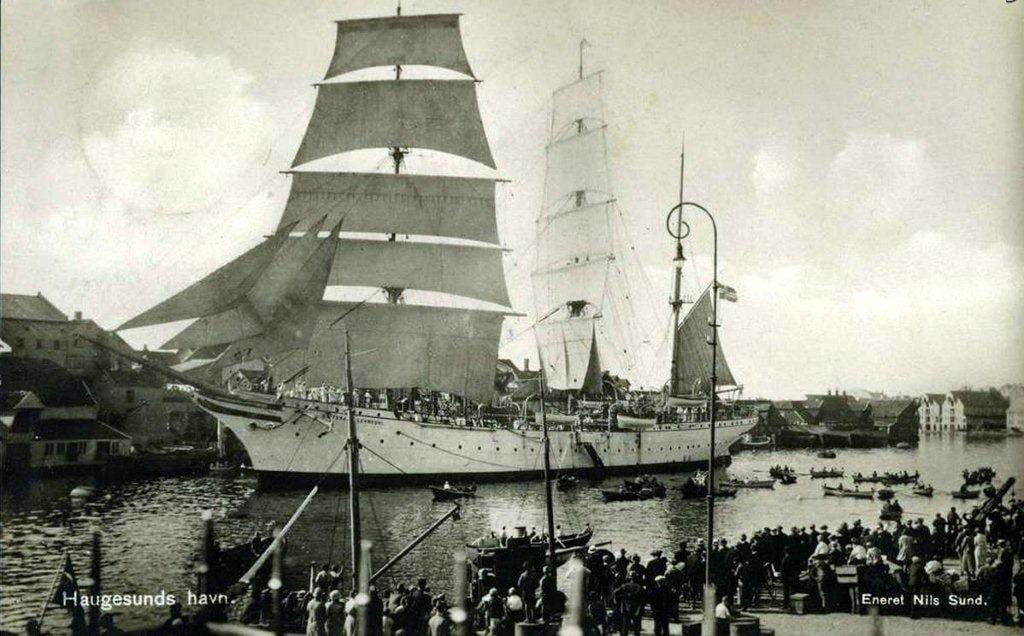
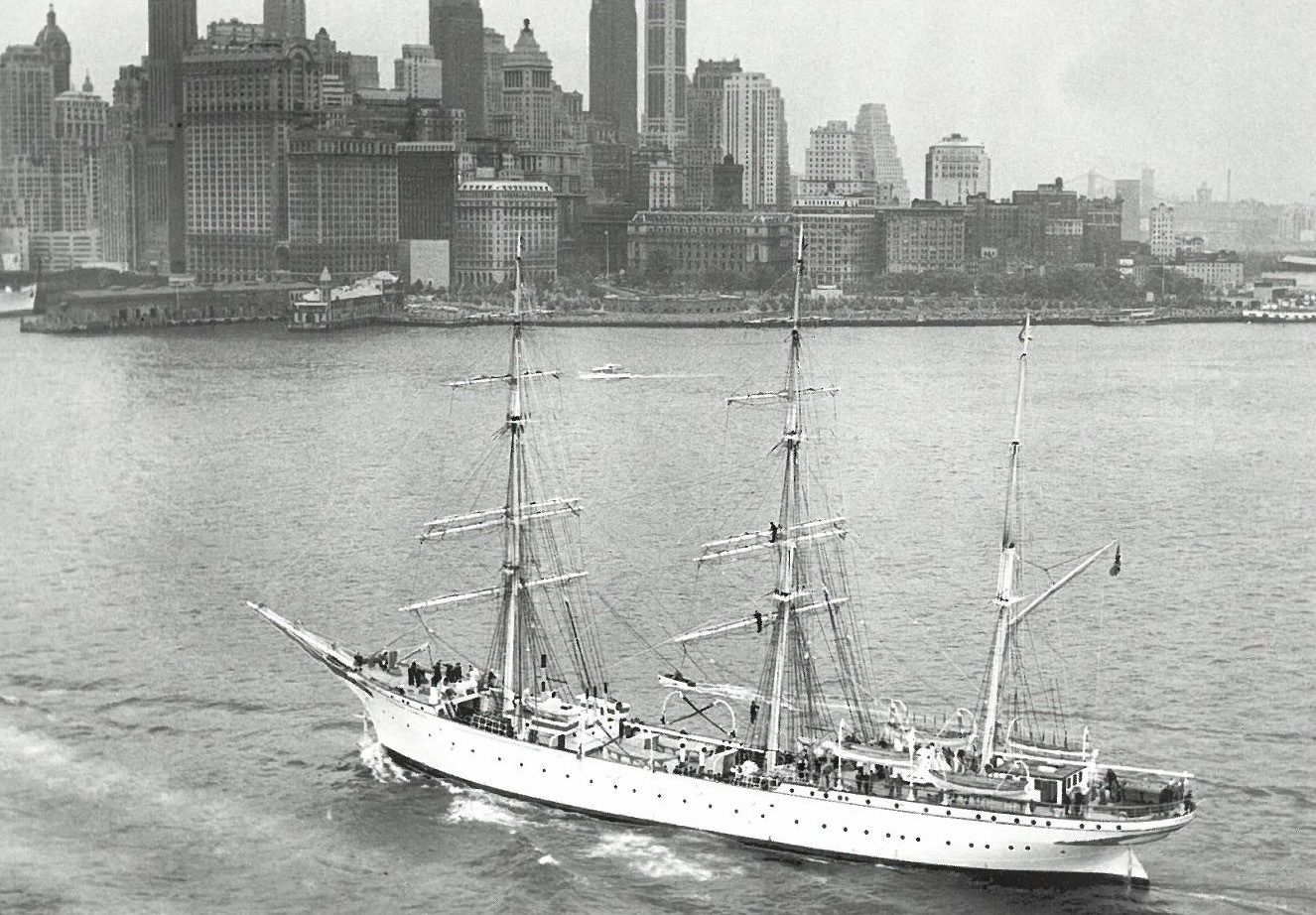


About One Ocean Expedition
One Ocean Expedition is part of the United Nations Decade of Ocean Science and aims to raise awareness and share knowledge about the importance of the ocean for a sustainable future from a global perspective. Since August 2021, the Statsraad Lehmkuhl has been on a two-year circumnavigation, and has along the way functioned both as a training and research vessel. The ship is equipped with state-of-the-art research equipment, which has continuously collected data on how humans impact the ocean. Along the way, exhibitions and other activities have been organised for schools, universities and partners around the world.
Photos: One Ocean
More stories from Kongsberg Gruppen
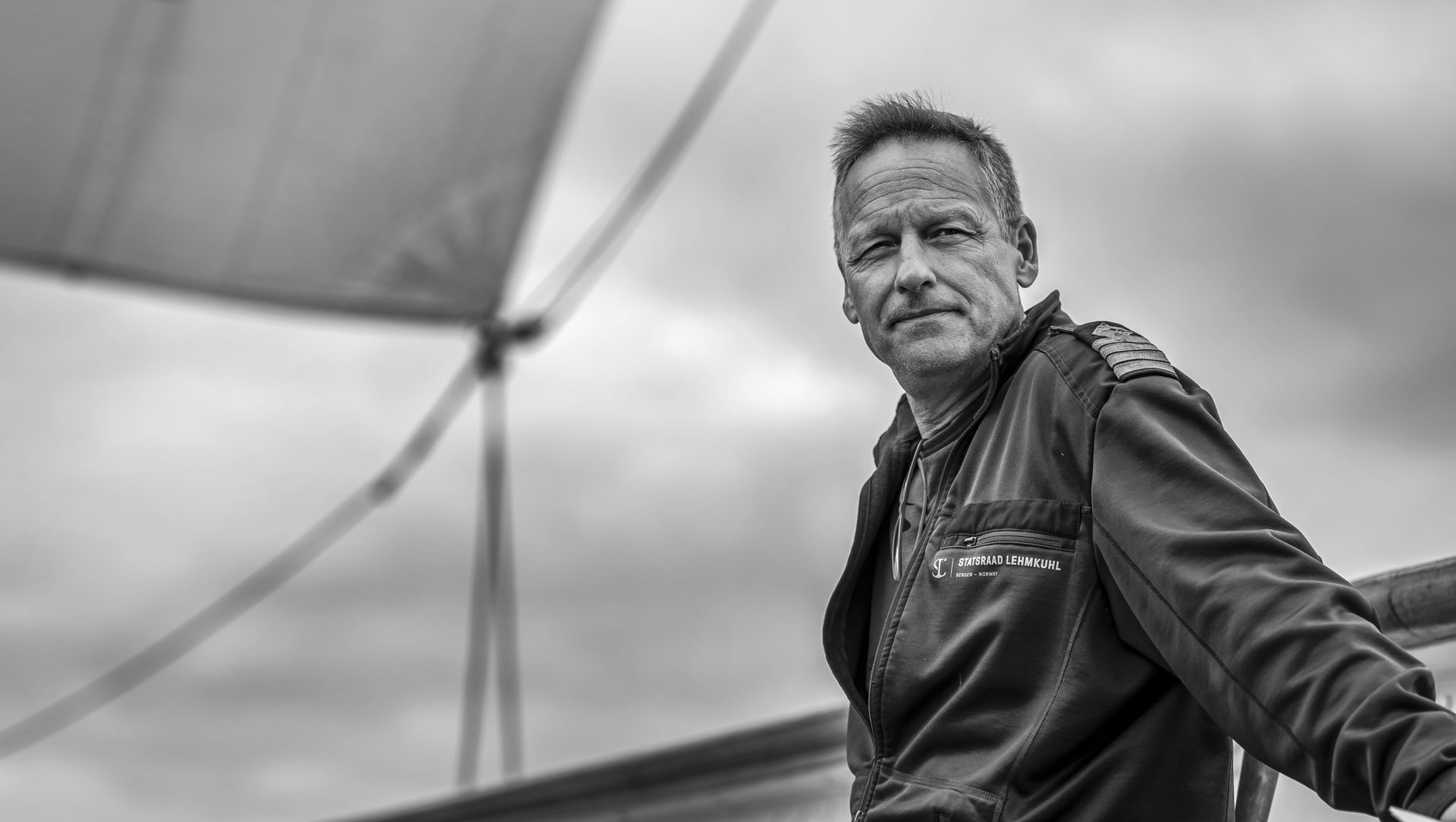



– Det gir oss muligheten til å ta pulsen på jorda
– Det gir oss muligheten til å ta pulsen på jorda
– Et industrieventyr gjennom 200 år
– Hvis du er opptatt av det nyeste innen robotikk, er dette stedet


- Seilskipet Statsraad Lehmkuhl ble bygget i Tyskland i 1914, og er et av verdens eldste og største barker – altså et seilskip med minst tre master.
- Seilskipet het opprinnelig Grossherzog Friedrich August, og ble overført til norsk flagg under navnet Statsraad Lehmkuhl i 1923.
- 22. mai 1978 ble Stiftelsen Seilskipet Statsraad Lehmkuhl formelt opprettet, og seilskipet har vært i helårsdrift de siste 20 årene.
- Hvert år deltar ca. 2000 medseilere på seiltokt om bord i Statsraaden.
- I 2019 ble det installert et batteri om bord, noe som gjør Statsraad Lehmkuhl til verdens mest miljøvennlige seilskip i sin klasse.
Om Statsraad Lehmkuhl

Dette er One Ocean Expedition
One Ocean Expedition er en del av FNs havforskningstiår, og har som mål å skape oppmerksomhet og dele kunnskap om hvor viktig havet er for en bærekraftig fremtid i et globalt perspektiv. Fra august 2021 har Statsraad Lehmkuhl vært på en to år lang jordomseiling, og har underveis fungert både som opplærings- og forskningsfartøy. Skipet er utstyrt med topp moderne forskningsutstyr, som kontinuerlig har samlet inn data om hvordan vi mennesker påvirker havet. Underveis har det blitt arrangert utstillinger og andre aktiviteter for skoler, universiteter og partnere verden rundt.



